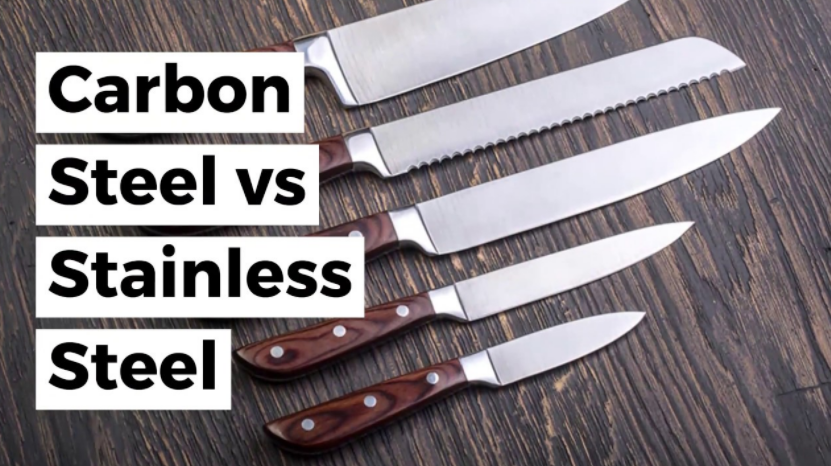Have you ever wondered why some steels look shiny and others are more subdued? Why some can resist corrosion while others are prone to rust? The answers to all these questions lie in the differences between nerūsējošais tērauds un oglekļa tērauds. Let’s delve into this article to explore the mysteries of these two tērauda veidi un uzziniet, kas tos atšķir.

Steel is found in a range of products from aerospace to kitchenware, and such diverse applications require a versatile material – which steel exactly fits the bill. ‘Steel’ actually describes a family of metal alloys, with hundreds of specific grades for specific applications, but most people classify steel into two main categories: nerūsējošais tērauds un oglekļa tērauds.
Nerūsējošais tērauds un oglekļa tērauds have the same basic composition of iron and carbon. The main difference between them lies in the alloy content – carbon steel has an alloy content of less than 10.5%, while stainless steel must contain 10.5% or more chromium. This essential difference is what gives carbon steel and stainless steel their unique physical properties.
Tērauda sastāvs
The basic elements of steel are iron and carbon. Generally speaking, steels with higher carbon content are hard and brittle, while steels with lower carbon content are ductile and tough. Of course, it’s rarely that simple. Alloying elements such as chromium, molybdenum, nickel, manganese or silicon can be added to improve corrosion resistance or achieve a better balance between strength and toughness.
Oglekļa tērauds
Carbon steel is composed of iron and 0.12 – 2.00% carbon. The broader definition also includes alloy steels, whose alloy content can reach up to 10.5%. Even within the range of carbon content below two percent, there are significant differences in physical properties, especially in terms of hardness.
When people talk about carbon steel, they usually refer to high-carbon steel used for knives and tools. High-carbon steel is very hard, which makes it well-suited to resisting wear and maintaining its shape. It can withstand a significant amount of force before deforming. Unfortunately, hard metals are also brittle: high-carbon steel is more likely to crack than bend when placed under extreme tensile stress.
Low-carbon steel is more common than high-carbon steel due to its lower production costs, better ductility, and ease of manufacture. Low-carbon steel tends to deform under stress rather than break, and this ductility makes it easy to process and weld. It is often used for automobile body panels, bolts, clamps, bezšuvju caurules, un tērauda plāksnes.
Nerūsējošais tērauds
Stainless steel contains iron, carbon, and at least 10.5% chromium. Chromium is the key – it reacts with oxygen to form a passive layer that protects the steel from corrosion. This protection reduces the likelihood of stainless steel rusting – which is important for outdoor site furniture such as bollards installed in damp environments. The higher the chromium content, the better the corrosion resistance.
When purchasing appliances and other large items, it is important to pay attention to the grade of stainless steel. Not all steels are the same. Stainless steel with a minimum chromium content of 10.5% is much cheaper and less durable than stainless steel with a chromium content of 16%, and the difference will be reflected in maintenance costs and service life.
Stainless Steel and Carbon Steel Knives
Home cooks often choose stainless steel knives, while professionals often prefer high-carbon steel.
Why? Stainless steel knives are more common and easier to store. Martensitic stainless steel is commonly used for cutting edges. These steels are harder than other grades. However, they are not as fragile as harder high-carbon steels: they can be thrown into the dishwasher or banged against a marble countertop.
For home cooks who don’t do precision knife work, this is usually sufficient. In this case, rust resistance helps to keep the blade sharp. Oxidation on the cutting edge can dull the knife just as much as wear.
Professional chefs often (but not always!) prefer high-carbon steel knives. These tools can be honed to a very sharp edge and are usually more wear-resistant than stainless steel. High-carbon grades can maintain a finer edge even with frequent use. Very hard metals are also brittle: when the force is too high, the metal won’t bend; it will break. This means that high-carbon edges are less likely to deform when they hit something, causing a series of chips and losses. Instead, they maintain a nice, clean line, and when they break, they shatter.
Such hard steel requires more care. Oil it before storing to prevent rust, rinse after using in very salty or acidic conditions, and re-hone on a stone (not steel). These maintenance steps make high-carbon steel more of a pleasure for high-end or professional chefs who value precision over ease of maintenance than for average home cooks.
Stainless Steel and Carbon Steel, Which One Should I Choose?
Carbon steel and stainless steel are different but not necessarily superior to the other. It all depends on the context. Each material has its advantages and disadvantages – the key is to match the steel with the job requirements.
High-carbon steel:
-
- Easy to rust
-
- Trausls
-
- Nodilumizturīgs
Nerūsējošais tērauds:
-
- Izturīgs pret rūsu
-
- Less brittle
-
- Wear-resistant but not as much
Secinājumi
Thank you for reading our article and we hope it can help you to have a better understanding of the difference between stainless steel and carbon steel. If you want to find more information about stainless steel, we’d advise you to visit Sino nerūsējošais tērauds lai iegūtu vairāk informācijas.
As a leading supplier of stainless steel, Sino Stainless Steel provides customers with high-quality stainless steel products such as Karsti velmētas nerūsējošā tērauda spoles, Auksti velmētas nerūsējošā tērauda spoles, Pulētas nerūsējošā tērauda spoles, Nerūsējošā tērauda stieples, un Precīzijas nerūsējošā tērauda loksnes par ļoti konkurētspējīgu cenu
 86 + 18621535697-XNUMX
86 + 18621535697-XNUMX  :export81@huaxia-intl.com
:export81@huaxia-intl.com